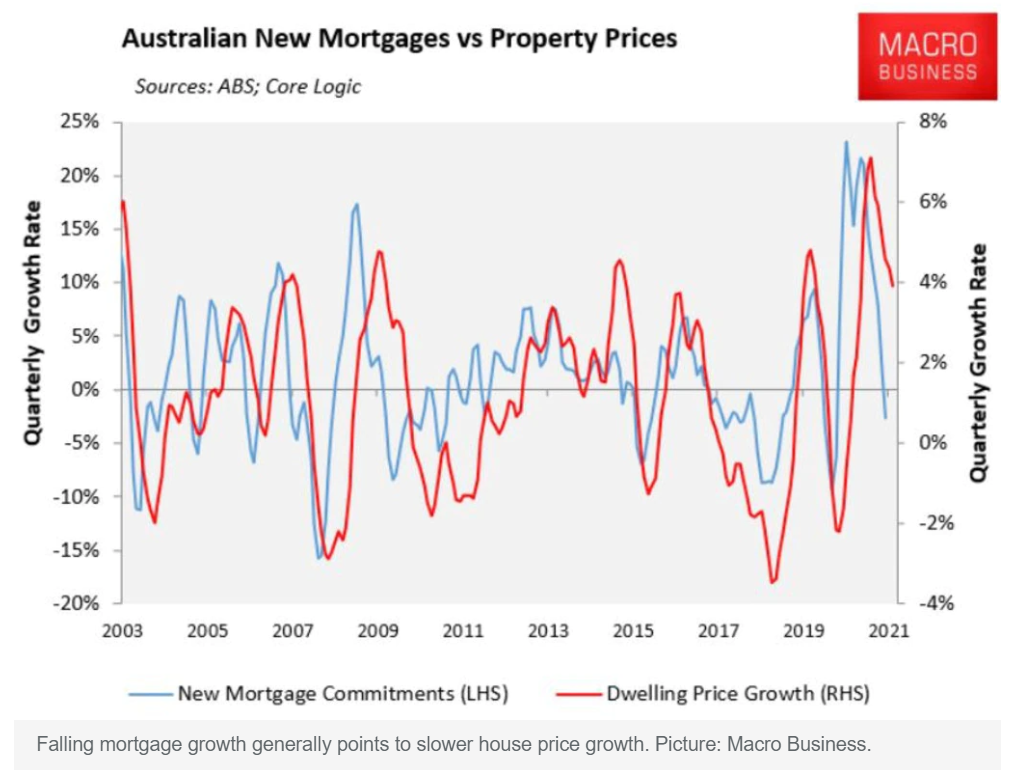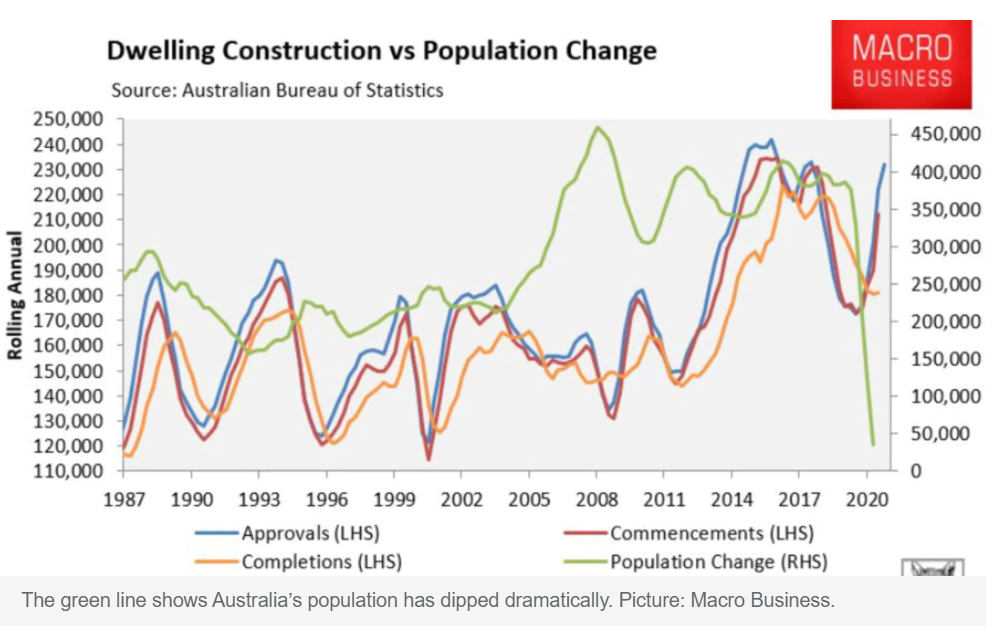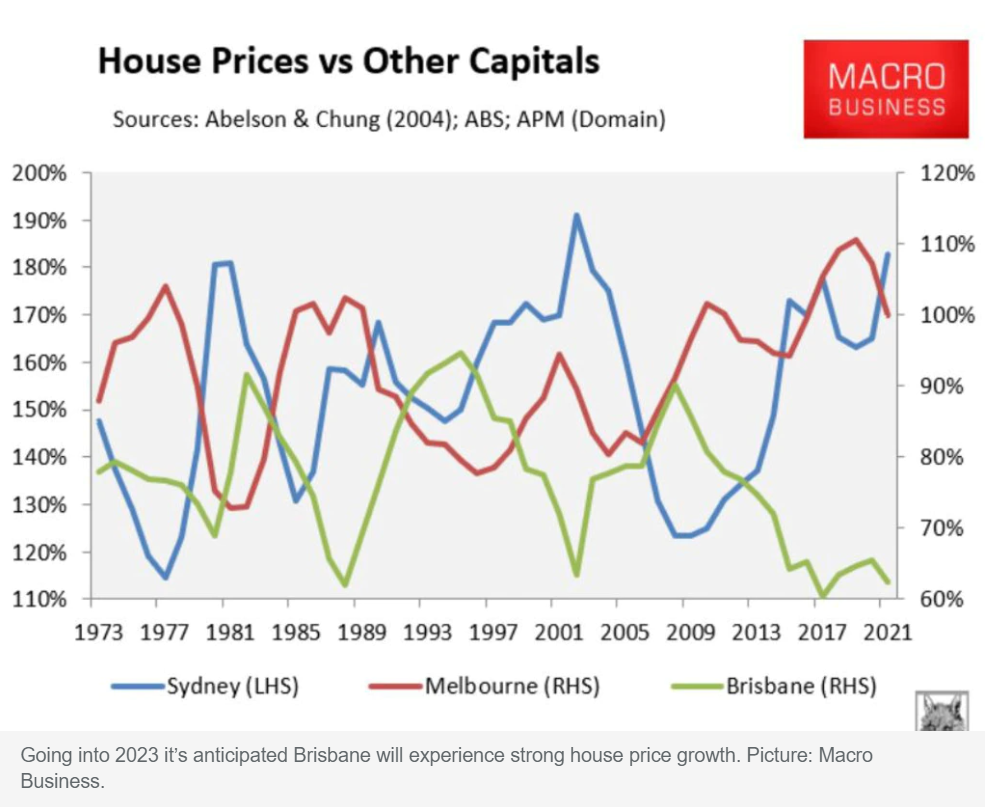Below is an article that I wrote this week for News.com.au:
This week, CoreLogic recorded another strong 1.3 per cent rise in Australian dwelling values, with values up an astonishing 22 per cent annually, led by extreme growth in Sydney (25.8 per cent), Brisbane (25.1 per cent) and Adelaide (up 21.4 per cent).
This marked the strongest annual price growth recorded by CoreLogic since 1989. It is also one of the broadest property booms on record with every capital city and state region recording strong annual growth.
There are several factors behind this strong price growth.
Record low mortgage rates and an acute shortage of homes for sale created ‘FOMO’ [fear of missing out] in the market. Household finances are in rude shape after they banked $200 billion worth of pandemic stimulus. Finally, jobs opportunities are plentiful with the number of job vacancies per unemployed and underemployed tracking near record lows.
However, as 2021 draws to a close, the property market is clearly losing steam – a process that should continue into 2022.
What will happen to house prices in 2022?
The number of homes for sale has spiked following the end of lockdowns across New South Wales and Victoria. In a similar vein, a record 4260 auctions took place last weekend, pushing Sydney’s clearance rate to its lowest level this year and Melbourne’s to its lowest level since mid-September.
Thus, after a prolonged period of FOMO whereby demand overran supply, supply has finally caught up, pointing to slower price growth.
New mortgage commitments have also turned sharply lower, suggesting property demand is waning.
Since nearly every home in Australia is purchased with a mortgage, falling mortgage growth historically has pointed to slower house price growth, as illustrated clearly in the chart below.

There are also several headwinds that are building that will slow property prices in 2022.
First, while the Reserve Bank of Australia (RBA) has signalled that it won’t raise the cash rate until at least 2023, fixed mortgage rates have risen by around 0.5 per cent from their recent record lows. While these rises won’t impact those already ‘in the market’, they will temper future mortgage demand by raising the overall cost of credit.
In a similar vein, the Australian Prudential Regulatory Authority (APRA) recently increased the buffer used in loan serviceability assessments from 2.5 to 3 percentage points. The RBA Governor also indicated that “more may need to be done” on the buffer front, suggesting that further increases are on the agenda.
Another longer-term headwind for the Australian property market is the rising supply of homes amid slow population growth (see next chart).

Thanks to the HomeBuilder stimulus, a huge volume of homes are currently under construction across Australia, which won’t hit the market until next year.
While the federal government’s planned immigration reboot will eventually soak up the surplus, the structural oversupply is likely to persist into 2023.
Finally, property price growth will slow on the back of declining affordability. Home values have risen far more quickly than incomes, meaning that an increasing share of buyers are being priced-out. As values rise, the pool of potential buyers will necessarily shrink.
Weighing all of the factors, our base case is for Australian property price growth to decelerate sharply in 2022, with values nationally to rise by between 7 per cent to 9 per cent.
Most of this growth should occur over the first half and by 2023 we expect the market to experience another correction, probably in the range of 5 per cent to 10 per cent.
Where will house prices stay strong?
Looking across the major capitals, we anticipate that Brisbane will experience the strongest price growth owing to its superior affordability and lifestyle versus Sydney and Melbourne, alongside its avoidance of virus outbreaks.

While Sydney and Melbourne house prices are tracking near historical highs relative to the other capitals, Brisbane’s prices are tracking near historical lows (see above chart). This means that Brisbane housing presents exceptional value relative to its larger East Coast cousins.
Indeed, the latest migration data from the Australian Bureau of Statistics (ABS) shows that tens-of-thousands of residents have already moved from Sydney and Melbourne to Brisbane.
This is a trend we believe will continue in 2022, which will drive Brisbane property prices higher, while Sydney and Melbourne should underperform.

